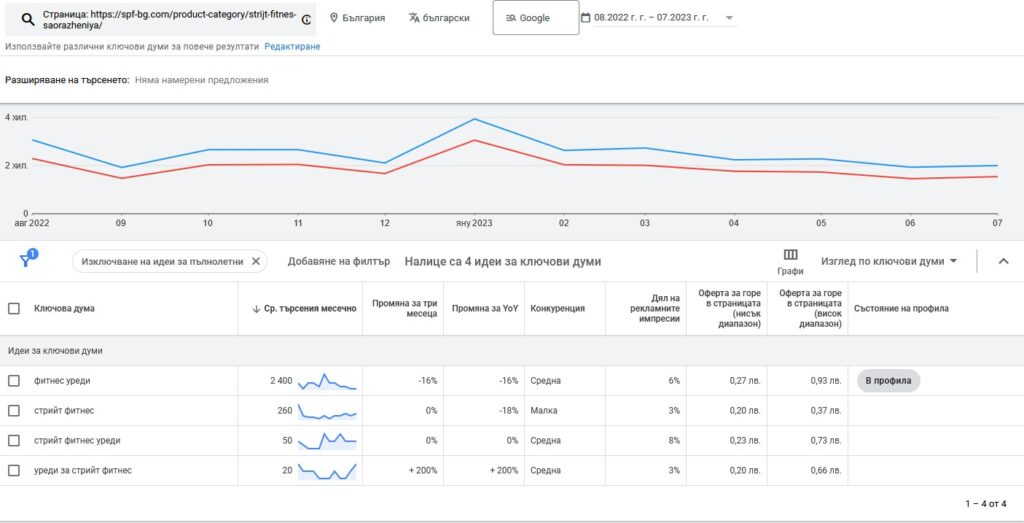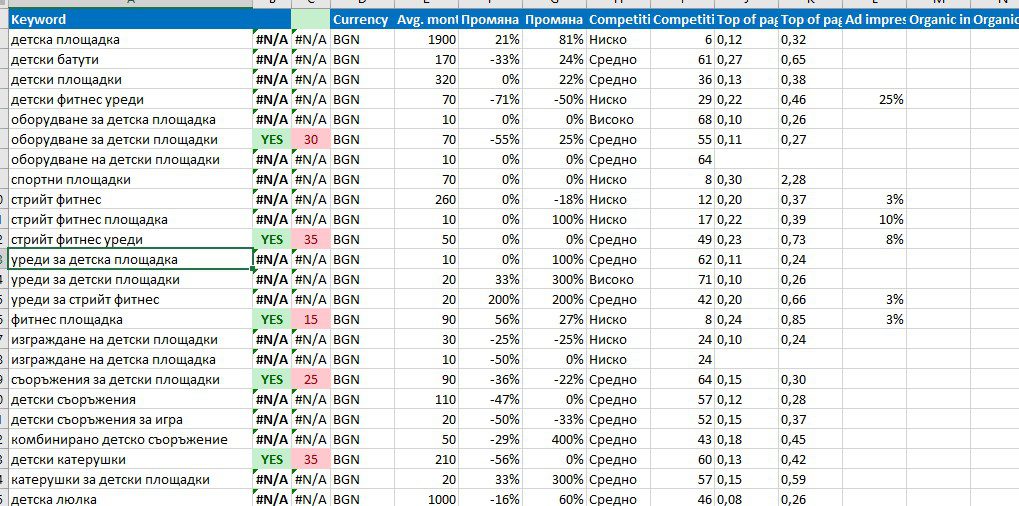This article is inspired by several cases I encountered in our recent projects.
I will provide some guidelines on what information you should require as future and current owners of online stores and websites.
What steps to take when creating your online store and what information and access you must always have.
What access and data should you require and always keep?
I will present you with a list of registration and access data that you must keep and have at all times. As the owner of an online store or website, you determine who and how has access to your data and accounts.
Do not share access data directly; provide access according to the level. Every platform or tool has this function, and no one will be upset about it.
Do not allow yourself to lose control; it may cost you dearly.
Here is an example table of what to keep and organise.
Important accounts for access to the website
Website or online store domain
Case: The client entrusted a digital agency with creating his website and gave them the right to register everything in his name. The problem is that the site will operate in the German-speaking market, and these types of domains are registered only by certain operators.
The problem: The previous agency registered the domain through their account, and since they did not continue their relationship with the client, when the first year expired, they received a renewal warning. They attempted to pay for the domain, the payment did not go through, they did not try to identify the problem, did not warn the client, and, of course, around three months later, the client discovers that the site is inaccessible.
According to the rules of the registrar, the domain entered the release mode, the account was deleted, and the domain is in pending release mode.
The solution: The client decides to seek assistance from us to solve the problem and restore the website.
After 4 days of discussions, sending emails, screenshots of data, and old correspondence, we managed to confirm that we have the right to use the domain, followed by payment, waiting for confirmation, canceling the release, and finally restoring the website and regaining access to the domain account.
If you are website owners, it’s unlikely that it will be inactive due to neglect; however, keeping it yours will bring joy.
The domain is yours, your name. Register it yourself or request information on how to do it, and your email should be listed as the administrative contact.
I know that most clients want to receive a comprehensive service, but believe me, the loss of 20 minutes of your time can save you a week of nerves waiting.
Hosting or where will your website be physically located?
The domain is the name of your website, and hosting is the physical location where the platform of the website, images, information, and all your products (if it’s an online store) are installed.
Case: The client decided to create an online store and entered into a one-year contract for SEO and support.
The problem: The client consciously paid for the respective services and optimisation but did not achieve the agreed-upon results. He turned to us for a redesign and assistance. It turns out he has no idea where the website is hosted, has not been provided with access data, and it’s clear he cannot operate the site.
The solution: After lengthy negotiations and explanations, we obtained backups of the database and files. Urgently, we had to organise hosting services, restore the online store, and redirect all DNS addresses. This was not a joy for either the client or us because it took time and nerves for everyone.
I recommend researching and, as a website owner, registering your hosting service first before giving access to the company that will build the website. Do not always rely on the lower price and comprehensive service. Demand this data to avoid losing access to your online store.
From here follows the logical step…
Administrative access to your website
Once created, you should have administrative access to your website. Through this access, you manage orders, upload new products, and information.
Depending on the platform, different levels of access are set, but I recommend you be designated as the owner or administrator of the site, and all information from the site should be directed to you. There are various ways to check and confirm this, but depending on the platform being used, you can check the documentation on how to do it.
Accounts in Google and analytics tools
As online business owners, you will want to receive data on visitors, rankings, orders, and your advertising campaigns. For this, you need accounts in Google Analytics, Google Search Console, Google Ads, and Ahrefs.
- Google Analytics: This platform gathers data from your websites and applications to create reports that provide information about your business.
- Google Search Console: This free service offered by Google helps you monitor, maintain, and troubleshoot problems with your site’s presence in Google search results. It’s not necessary to register in Search Console to be included in Google search results, but Search Console helps you understand and improve how Google sees your site.
- Google Ads: This tool is based on a bidding system, where you, as an advertiser, choose the maximum bid amount you are willing to pay for a click on your ad. The higher your bid, the better your placement. You have three bidding options: CPC, CPM, or CPE. CPC or cost-per-click is the amount you pay for each click on your ad.
- Ahrefs: An SEO software suite that includes tools for link building, keyword research, competitor analysis, rank tracking, and website audits.
Case: The client relied on a digital agency to conduct the necessary SEO audits, monitor visits, send analyses based on agreed KPIs to the client, and manage and optimise advertising campaigns.
The problem: The client left it to the digital agency to organise these accounts. When he decided to change the servicing company, it turned out he had no access or rights to manage these accounts. Not to mention that they were not connected, and data was not exchanged.
The solution: Always provide your email or register these accounts yourself and then grant access. This will leave the rights in your hands, allowing you to check the data and how the budget is spent and the final results.
Advice: Just observe but do not touch anything in the settings and configuration. If you have doubts, ask colleagues to take a look, but if the servicing digital agency is doing a quality job, you shouldn’t have a problem.
And one more problem we have encountered… the separation of processes. Just as well-differentiated digital agencies work on ads, optimisation, and link-building strategy, this ties their hands.
I can give you a dozen reasons why not to do it… mismatch in planning… mismatch in data reporting… lack of a common strategy and tracking… complex communication and a clumsy structure… and the main thing, each of them pursues its goals without a common plan.
Accounts on social networks
The above information is fully applicable to pages and accounts on social networks. Each of them has a different way of management and access, but you should be the administrator. Take some time to create them, and then provide access, preferably not with full rights.
Contract for the creation of an online store
The most important thing for everyone is to get a low execution cost.
Really?
Would you do something for 30% lower cost? … Hardly.
This applies to digital agencies as well.
- Seek at least three offers with clearly outlined requirements.
- Leave yourself a reserve of time and money.
- Examine their projects and reviews.
- Have a meeting and compare the information.
- Do not trust empty promises for quick rankings and first positions unless you pay for advertising in Google, and even then, be cautious.
And make your decision based on this.
Demand a contract with specified tasks or an offer with performance points.
Technical support
Do not leave your website without technical support. For a minimal fee, hire a specialist to check and update the modules and plugins on your site. Updates are released periodically and are often critical, covering security vulnerabilities in the platform or its add-ons.
The service company will monitor the status, assist you with design corrections, update the theme, and keep your site in good health.
For me, this is crucial, like a preventive check-up with a doctor. Basic steps before creating an online store or website.
Basic steps before creating an online store or website
So, you’ve reached the point of creating your online store or website to expand your markets, increase orders, and attract more customers. You have an idea, and it’s time for an action plan…
Choosing a domain for the website
Keep in mind that the name is part of the optimization, and the extension is determined by the region in which you will operate.
If you’re going to sell sunglasses, it makes sense to check for available domains with names like sunglasses.com, your-sunglasses.com, sunglasses-shop.com, best-sunglasses.com.
Be careful with transcription; slancheviochila.com doesn’t sound very good. And if you’re establishing a brand for your products, register the website name according to the brand. This way, you’ll be working on it, and it will be more memorable than just another glasses store.
The extension .bg / .com / .co.uk logically depends on the country where you will sell or offer your services. Check if the desired name is available and register it.
Where will your site be hosted?
The choice of hosting depends on the size of your site, whether it is a service site, an online store, what the volume of pages and products will be.
For which country will you offer your goods and services? It is not logical to host your site in Bulgaria and sell in Germany.
Do not choose the lowest plan for an online store; always plan a reserve of space and traffic.
Research and be cautious about:
- Traffic limitations – this may be challenging to determine for a new online store, but it can be planned based on tests.
- Provided space – this is one of the main constraints that you can quickly exceed.
A few examples:
- Website 1 – services and products
250 products
2725 files
110 pages
WordPress + WooCommerce
Volume – 4 GB
- Website 2 – services, does not offer products
72 pages
830 images
WordPress
Volume – 1.7 GB
- Website 3 – services and products
50 pages
30 categories
200 products
670 images
WordPress + WooCommerce
3 GB
Include emails in this volume, which will accumulate, and you will have an approximate idea of the volume you need.
- Number of daily visits from customers – hosting companies sometimes impose daily visit restrictions, and you need to be careful if you don’t want to miss a customer in your online store.
- Number of inodes (these are the number of files you can upload, often including emails)
- Does it offer automatic backup of the database and files?
These factors are not insignificant, and you can always change hosting, but it takes time and nerves.
The platform on which your website will be built
Here, things may seem easy, but you’ll encounter several difficulties.
- The most widespread and used platform for website development is WordPress, combined with WooCommerce for creating an online store. However, keep in mind that, despite the vast number of plugins and modules, it can be sluggish and requires regular updates and significant technical optimisation to maintain good loading speed.
- Next, I would recommend PrestaShop. It is relatively easy to use, supports more products than WordPress, but for beginners, it can be confusing and challenging to configure.
- Top-tier, in my opinion, is Magento. It is a platform with many features and the ability to manage multiple stores in one place. Complex to manage and set up, it’s definitely not for beginners, and serious knowledge is required to work with it.
- Last but not least, I would mention ready-made platforms offered by various companies. You can get a ready-made website or online store by choosing a theme and design with a few clicks. However, a significant drawback is that, based on my experience with some of them, optimisation and management are complex and labor-intensive. If you decide to switch to another platform, the transfer is labour-intensive and time-consuming.
Keep in mind that this is a personal opinion, and you should conduct your own research to decide which platform to choose for building your website.
I recommend studying it at least superficially to avoid problems with usage later on.
You can find more information about the platforms here:
Keyword analysis and SEO when building a website
This part is complex, and I recommend turning to a digital agency to prepare the initial analysis and semantic core. However, if you still want to continue on your own, here are some guidelines:
Keywords you want to rank for: Create a list and input each one into Google Keyword Planner. Export the data with suggestions, check the search volume, additional suggestions, and record them.

Do the same with your competitors.

Analyse each of their categories and pages.

Compile all this information into a table, and you will see for yourself what primary and additional keywords to focus on.

As you can see, through simple formulas and thorough research, you can visually see for which keywords and at what position you are ranking. Work accordingly for better rankings and for ranking on other keywords.
There are many ways to optimise your website, and if you find it challenging, we are here to assist you.
Channels for promoting your website
Digital marketing is an essential part of development, and if you want to quickly and effectively attract more customers, utilise each of the following channels:
- Link building
- PPC advertising
- Advertising and maintaining profiles on social media
- Video presentations and podcasts
- Completed projects – demonstrate that you are active and working continuously
- Internal Optimisation – monitor and update content, images, useful information, and news.



